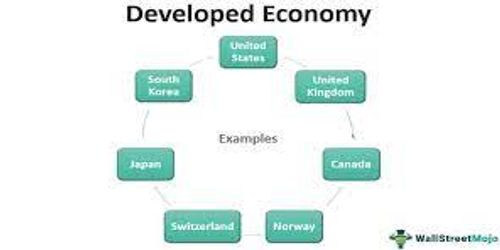Building Trust: Elevating the Lending Process for Commercial Clients
Oct 07, 2024 By Georgia Vincent
In today's competitive financial landscape, fostering trust with commercial clients is not just a goal but a necessity for success in the lending industry. Transparency and accountability are foundational elements that shape long-lasting relationships. By committing to straightforward communication and bespoke service offerings, financial institutions can effectively address the unique concerns and objectives of each client. Clients are more likely to engage in business partnerships when they feel confident in the lender's competence and integrity. Furthermore, employing advanced technology to streamline loan processes enhances efficiency and reduces complexities, reinforcing client confidence and satisfaction. This approach not only improves client retention but also strengthens the institution's reputation, positioning it as a trusted leader in commercial lending.
Understanding Client Needs:
Prior to establishing trust, it is imperative to grasp the distinct needs and expectations of each client. Commercial clients face unique challenges and objectives that often necessitate a customized lending approach. Financial institutions must engage in active listening and maintain open communication with clients to thoroughly comprehend their objectives, risk tolerance, and industry dynamics.
Furthermore, conducting market research and staying informed about current economic trends can yield invaluable insights into the needs of commercial clients. This proactive strategy not only highlights expertise but also underscores a commitment to supporting clients in achieving success within their respective industries.
Comprehensive Client Assessments
Gaining a deep understanding of a client's business model, industry challenges, and financial health is essential. Financial institutions should invest in comprehensive assessments that extend beyond standard credit checks. Engaging in detailed discussions about the client's business objectives, cash flow cycles, and market dynamics can provide crucial insights. This understanding enables lenders to tailor their offerings, ensuring alignment with the clients specific needs.
Transparent Communication
Clear and open communication is fundamental to building trust. Lenders should offer clients detailed explanations of loan terms, interest rates, and potential risks associated with financing options. Using simple language instead of jargon can help clarify the lending process. Providing regular updates throughout the application process further enhances transparency, making clients feel informed and valued.
Enhancing the Application Process: Technology Solutions

The traditional lending process is often seen as laborious and time-consuming, typically involving multiple rounds of document exchanges, revisions, and reviews. This complexity can delay the process significantly, causing frustration for both lenders and applicants. Embracing technology solutions can revolutionize this experience by enhancing efficiency and minimizing the potential for human error.
By digitizing document collection and processing, utilizing secure electronic signatures, and implementing advanced automated underwriting systems, financial institutions can significantly expedite the entire application process. These technological advancements not only save time and resources for lenders but also provide clients with a more seamless and streamlined experience that enhances satisfaction and trust.
Streamlined Processes
The lending application process can often be cumbersome, involving stacks of paperwork, repeated information requests, and long waiting periods, all of which may deter potential clients. Financial institutions can streamline this process by leveraging cutting-edge technology. Implementing digital application systems allows for quick and easy document uploads, electronic signatures, and instant communication, significantly reducing processing times and making the experience more user-friendly and efficient.
Moreover, providing clients with a comprehensive checklist of required documents and clear guidelines can help them prepare for a smoother submission process, setting expectations and reducing back-and-forth communication.
Personalizing the Experience
A personalized approach to the lending process can greatly enhance client trust and satisfaction. Assigning dedicated loan officers to commercial clients ensures they have a consistent and knowledgeable point of contact throughout the process. These officers can build strong relationships with clients, offering tailored guidance and support, which is particularly beneficial for complex business financing needs that require specialized expertise.
A personalized touch demonstrates to clients that their business is valued and that their specific needs and circumstances are prioritized. This kind of individual attention can lead to increased client loyalty and positive word-of-mouth, which are invaluable for financial institutions looking to grow and maintain their client base.
Building Credibility: Delivering on Promises
For financial institutions, building and upholding credibility is essential and hinges on their ability to fulfill promises made to clients. This entails consistently meeting deadlines, offering clear and accurate information, and adhering to commitments made during the lending process. Any failure in these areas can quickly erode trust and tarnish the institution's reputation, making it difficult to retain existing clients and attract new ones.
Consistency in delivering high-quality service not only strengthens credibility with clients but also lays the groundwork for enduring partnerships that can withstand market fluctuations and economic challenges.
Sharing Success Stories
Highlighting successful lending cases and client testimonials can effectively bolster credibility and showcase the institution's strengths. By showcasing real-life examples of how financial products have propelled businesses forward, lenders can demonstrate their expertise, reliability, and commitment to client success.
Case studies that detail the challenges faced, solutions provided, and outcomes achieved can deeply resonate with potential clients, offering them a glimpse into the tangible benefits of partnering with the institution. Sharing these success stories through various channels, such as social media, newsletters, and industry conferences, can enhance the institution's visibility and appeal.
Establishing Industry Expertise
Lenders should establish themselves as industry leaders by sharing valuable insights and resources that address current market trends, economic conditions, and best practices. Regular webinars, in-depth whitepapers, and informative blog posts can engage and inform clients, providing them with the knowledge they need to make informed decisions.
This educational strategy not only builds credibility but also underscores the lender's dedication to supporting clients beyond mere transactions, positioning them as trusted advisors in the financial landscape. By consistently providing this level of thought leadership, financial institutions can differentiate themselves from competitors and reinforce their role as essential partners in their clients' financial journeys.
Fostering Long-Term Relationships: The Key to Trust

Cultivating trust with commercial clients is an ongoing journey rather than a one-time effort. In today's competitive financial landscape, building and maintaining trust requires consistent dedication and strategic effort. Through consistently excellent service, tailored and personalized solutions, and demonstrated credibility over time, financial institutions can effectively nurture long-term relationships with their clients.
This ongoing commitment to trust-building leads to increased client retention and sustained institutional growth, creating a stable foundation for future success. As the saying goes, "Trust takes years to build, seconds to break, and forever to repair." Therefore, by prioritizing and investing in trust-building strategies, financial institutions can establish themselves as valued and reliable partners for their commercial clients, ensuring mutual success and growth.
Post-Loan Support
A successful lending relationship should extend well beyond the initial loan disbursement. Providing ongoing support, such as regular check-ins, financial health assessments, and personalized financial advice, helps maintain and strengthen trust over time. Lenders who proactively engage with their clients can aid them in navigating various financial challenges, providing valuable resources and insightful advice to ensure their continued success. This proactive approach not only reinforces trust but also positions the lender as a supportive ally in their clients' financial journey.
Building a Feedback Loop
Implementing a robust system for gathering client feedback on the lending process can reveal critical areas for improvement, fostering an environment of continuous enhancement. Soliciting client input reflects a strong commitment to service excellence and adaptability, traits that are highly valued in the financial industry. By actively responding to this feedback, institutions not only enhance the client experience but also demonstrate that they genuinely value their clients' perspectives and are dedicated to meeting their needs.
Conclusion:
Building trust in the lending process for commercial clients is a complex endeavor that demands strategic intentions and ongoing dedication. By understanding client needs, refining the application process, establishing credibility, and nurturing long-term relationships, lenders can elevate their services and foster a more trustworthy environment. As the financial landscape evolves, those who prioritize trust will be well-positioned to succeed in serving their commercial clients. Ultimately, trust is not just a desirable outcome; it is a critical driver of sustainable business relationships in the lending industry.

Understanding Non-Deductible IRAs: Essential Insights

How to Refinance Your House - A Comprehensive Guide

What Is a Developed Economy?: An Extensive Overview

Top 8 Social Media Marketing Agencies to Elevate Your Small Business

Are Debt Collectors Allowed to Message or Text People

Which Is Better, Buying Or Building A Home?

Questions with Amex Digital Labs’ VP and head of partnerships

Will My Tax Refund Be Used for Student Loans?

Review of Country Insurance's homeowner plan

